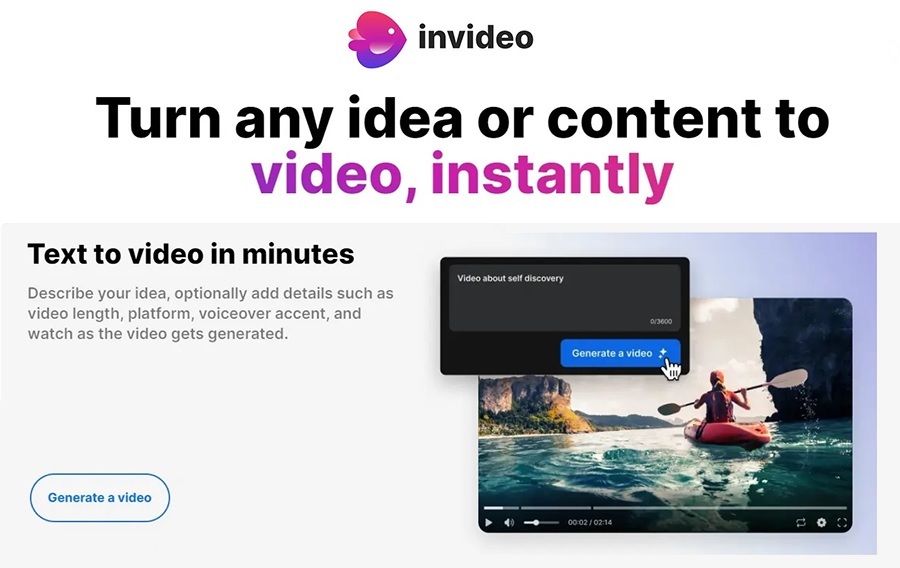
For centuries, humans have relied on the written word to share ideas, stories, and knowledge. Yet in today’s digital age, attention is captured not only by text but increasingly by video. Video is engaging, memorable, and persuasive, which is why it dominates social media feeds, websites, and marketing campaigns. The challenge has always been that producing video requires skills, time, and resources that many creators and businesses lack. Enter artificial intelligence. AI-powered text-to-video technology is bridging the gap, transforming simple written prompts into polished video content in a matter of minutes. This evolution is reshaping how stories are told, lowering barriers to entry, and democratizing content creation.
Contents
From Written Word to Moving Images
The concept of turning text into video might once have sounded like science fiction. Traditional production demanded writers, editors, animators, and voice actors. Even basic videos required hours of effort. With AI, however, creators can type out a script, description, or even a handful of bullet points, and the software generates a video complete with visuals, narration, and transitions. This shift is not just about efficiency – it represents a fundamental reimagining of how we communicate in the digital age.
How Text-to-Video AI Works
Behind the scenes, text-to-video platforms combine multiple AI technologies. Natural language processing interprets scripts, identifying tone, intent, and keywords. Generative AI then matches this understanding with appropriate visuals, animations, and stock footage. Voice synthesis produces lifelike narration, while machine learning fine-tunes timing and pacing. The result is a cohesive video that feels handcrafted but was built in a fraction of the time.
Customization Options
While automation is powerful, creators are not locked into cookie-cutter results. Text-to-video platforms allow for customization of themes, colors, fonts, and styles. Users can swap in their own media, adjust narration, or tweak pacing, ensuring the final product aligns with brand identity and audience preferences.
Why Text-to-Video Matters
The rise of text-to-video AI is significant because it addresses some of the biggest pain points in digital communication: speed, accessibility, and cost. Videos that once took weeks and thousands of dollars to produce can now be created in minutes for a fraction of the cost. This levels the playing field, giving small businesses, educators, and independent creators access to tools once reserved for larger organizations with big budgets.
Engagement Benefits
Studies consistently show that video outperforms text alone. According to marketing research, viewers retain 95 percent of a message when it is delivered via video compared to just 10 percent through text. By making video creation faster and cheaper, text-to-video AI helps creators take advantage of this engagement boost without requiring professional teams.
Industries Embracing Text-to-Video
Although text-to-video tools are versatile, a few industries stand out as early adopters.
Education
Teachers and online learning platforms use text-to-video AI to transform lesson plans and study guides into engaging video modules. Instead of assigning pages of reading, educators can provide visual explainers that appeal to different learning styles and boost retention.
Marketing and Advertising
Marketers are constantly pressed for fresh content. AI helps them quickly turn blog posts, product descriptions, and press releases into videos for social media campaigns, email marketing, and landing pages. This ability to repurpose text into video maximizes return on existing content and keeps campaigns dynamic.
Corporate Training
Businesses rely on training materials to onboard employees and maintain compliance. AI allows them to turn dense manuals or policy documents into short, digestible training videos. This not only saves time but also increases employee engagement with critical information.
Nonprofits and Advocacy Groups
Nonprofits often struggle to communicate complex issues with limited resources. AI text-to-video tools allow them to quickly create emotional, story-driven content that spreads awareness and inspires action, all without exceeding tight budgets.
Case Studies and Real-World Applications
A small online retailer might take product descriptions from their website and instantly generate short promotional clips tailored for Instagram and TikTok. An e-learning startup could feed lesson transcripts into a platform and receive polished video courses complete with narration and visuals. Even government agencies have begun experimenting with AI-generated explainers to share public health information quickly and effectively.
The Human Role in AI Video Creation
Despite the power of automation, human creativity remains vital. AI can generate the scaffolding of a video, but people provide nuance, humor, emotion, and storytelling flair. Creators often refine AI outputs by adding unique perspectives, cultural references, or personal touches. This collaboration between AI and human input ensures videos are not only efficient but also authentic.
Challenges and Limitations
AI-generated videos are not without challenges. Automated visuals may sometimes miss the mark, producing generic or irrelevant imagery. Voice synthesis, while increasingly realistic, may lack the subtle emotion of a human narrator. There are also ethical concerns around transparency – audiences should know when they are watching AI-generated content. These limitations highlight the need for thoughtful use of the technology rather than blind reliance.
The Future of Text-to-Video AI
The future promises even more exciting developments. Advances in generative AI will likely allow for videos that adapt in real time to viewer preferences, offering interactive experiences. Imagine a training video that adjusts based on employee responses or a marketing video that tailors its message depending on the viewer’s demographics. Integration with augmented and virtual reality could make AI-generated videos even more immersive, blurring the line between storytelling and experience.
The evolution of text-to-video AI represents a turning point in digital communication. By turning simple text into compelling video content, these tools empower anyone to become a storyteller, regardless of technical skill or budget. While challenges remain, the benefits are undeniable: faster production, lower costs, broader accessibility, and greater engagement. For businesses, educators, nonprofits, and individuals alike, text-to-video AI is not just a passing trend – it is a cornerstone of the future of content creation.

